Ads That Don’t Get Clicked: What Influences on Banner Blindness in 2025
Advertising has become so numerous that it is often ignored. Marketers are finding it increasingly difficult to compete for the attention of potential customers and overcome so-called banner blindness. Users are becoming less receptive to ads. It negatively affects the ROI of advertisers.
In this article we explore what banner blindness is and how to overcome it with the help of in-app promotion.
What Is Banner Blindness
According to a study by Infolinks, 86% of internet users suffer from banner blindness. Since 1998, this is a psychological phenomenon where users consciously or unconsciously ignore banners on websites.
The brain literally ‘filters out’ visual noise to focus on more important information. And while web page templates and ad types have evolved, banner blindness is still prevalent, according to a Nielsen Norman Group study.
There are trajectories that a user’s gaze typically follows:
- F-pattern. The focus is on headlines, subheadings and paragraphs. News sites rely on this principle. Information in the margins is ignored by the user as knowingly promotional.
- Z-pattern. This is the trajectory along which the user’s eye moves from the upper left corner of the screen to the right, then to the lower left and lower right.
- Centre area of the screen. Mobile app users tend to focus on it.
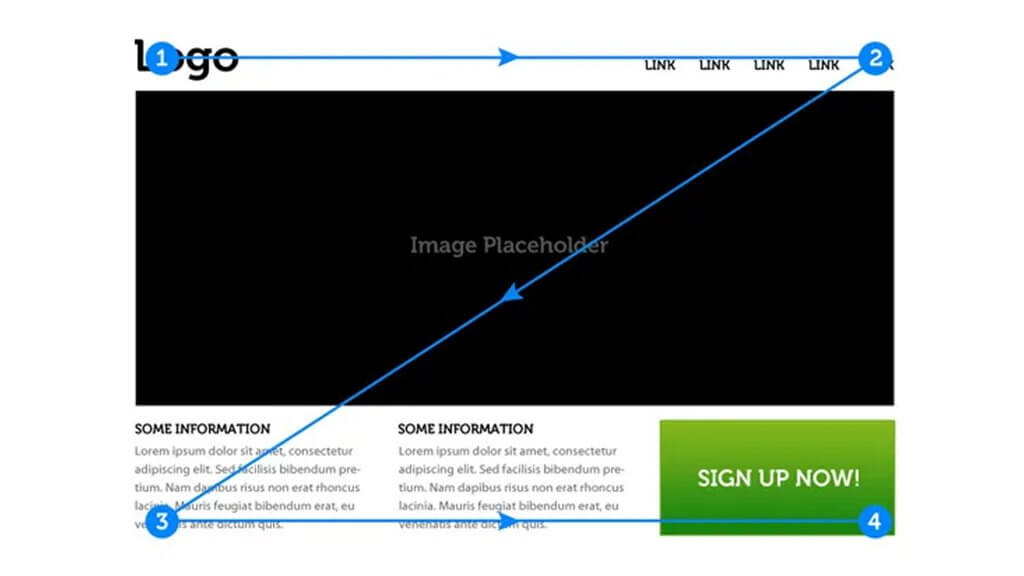
People focus on information that is related to their goals. This behaviour is a consequence of the limited capacity of human attention.
In order to avoid overload and efficiently perform tasks, users have learnt to highlight useful elements, such as navigation bars, search boxes, headings, and ignore useless ones.
This is how banner blindness was formed, which hinders the promotion of products and services. Brands get fewer clicks and sales.
For the user, this means they may miss out on hot offers, promotions or products that could be useful.
Which Adverts Are Most Likely To Be Clicked Through
- Banners at the top and right side of the page. A Nielsen Norman Group observation confirms it. The company tracked eye movements and noticed that some users skip adverts at the top of Google’s search results.
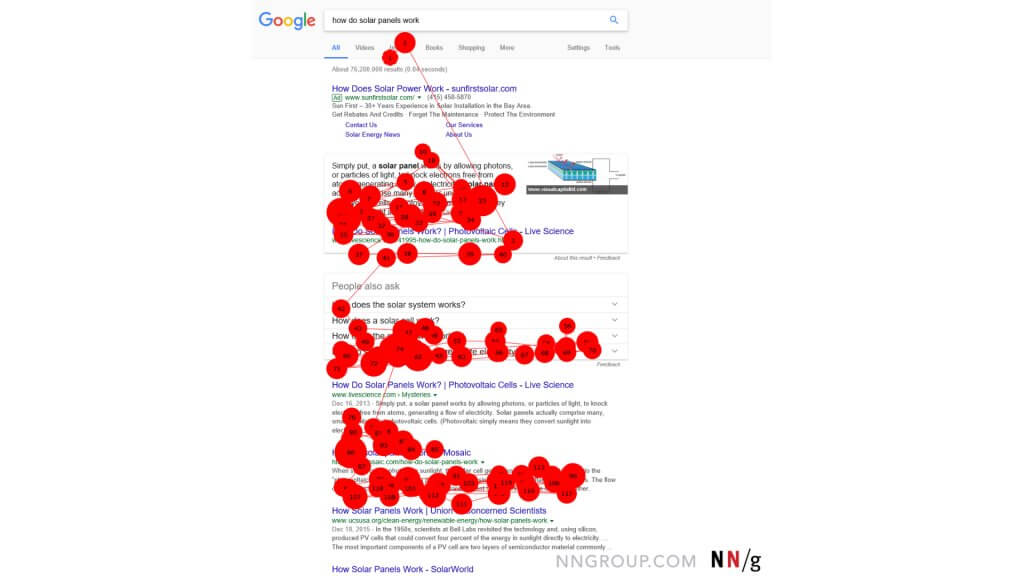
- Ads with overloaded visuals. Attempts to make the advert stand out from other information on the web page may repel the user. A catchy design is associated with advertising and is perceived by the brain in this way. Researchers from the National Research University Higher School of Economics have shown: the more neutral banners are, the more effective they affect users.
- Incorrect targeting and mismatch with user interests. Incomprehensible and irrelevant advertising is tiresome and repulsive.
- Intrusive pop-ups. An offer to subscribe to a newsletter in the first 10 seconds of being on the site can push the user away. It literally interrupts his actions, such as browsing the catalogue, exploring case studies and benefits.
- The link in the advert does not fulfil the user’s request. If the banner leads to a landing page that doesn’t match the stated topic, it’s annoying.
Despite banner blindness reducing the performance of ad campaigns, brands’ promotional spending is only increasing. This is because there are effective tools to attract users’ attention and combat ad swiping.
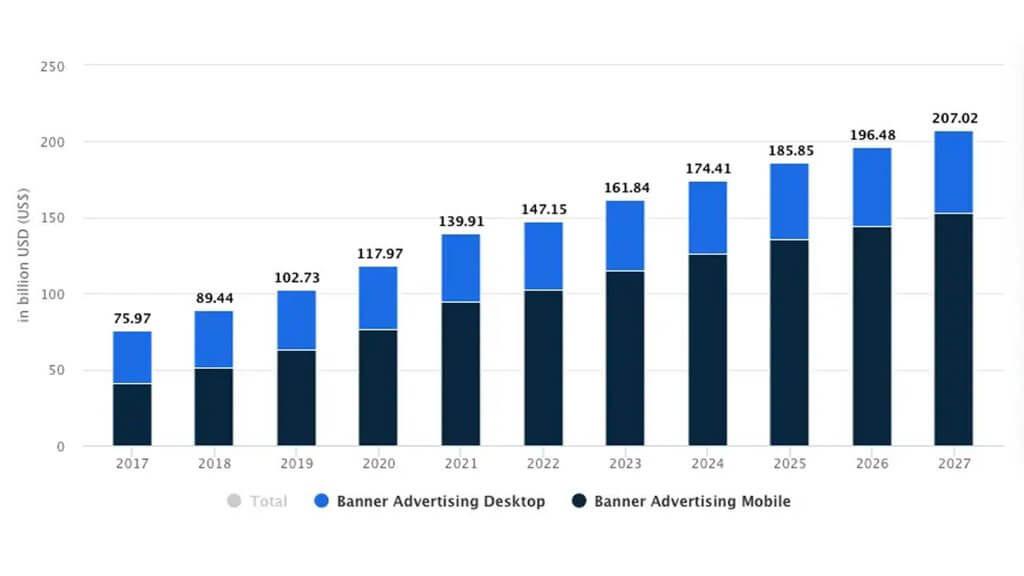
Mobile Advertising As a Way to Overcome Banner Blindness
Banner blindness is a common problem when users don’t notice standard ad formats. In-app promotion, i.e. advertising inside mobile applications, helps to effectively circumvent this limitation.
The key tools for overcoming banner blindness are creatives and targeting.
Creatives
Unlike static banners on desktop, in-app advertising is more interactive and user-centric.
It includes:
- Static banners
- Videos
- Interactive banners
Interactive banners show high user engagement rates. Creative formats allow you to show more information, to interest potential customers through interaction with content.
The possibilities of mechanics are almost limitless.
For example, you can add a ‘wipe’ effect to banners: the user removes elements from the screen to get information. The ‘countdown’ mechanic calls for a targeted action before a set time has elapsed.
Rich media are animated banners with interactivity. They allow you to add animations, graphics and interaction elements to engage users.
At in-app campaigns, they appear on top of content and stay on the screen until the user clicks on a special button.
Varieties:
- Animations
- Mini-games
- Tests
- Before/after
- Audio
- Slides, etc.

According to Google, rich media increases engagement by 75% over standard ads. This is an important tool for companies looking to break through banner blindness.
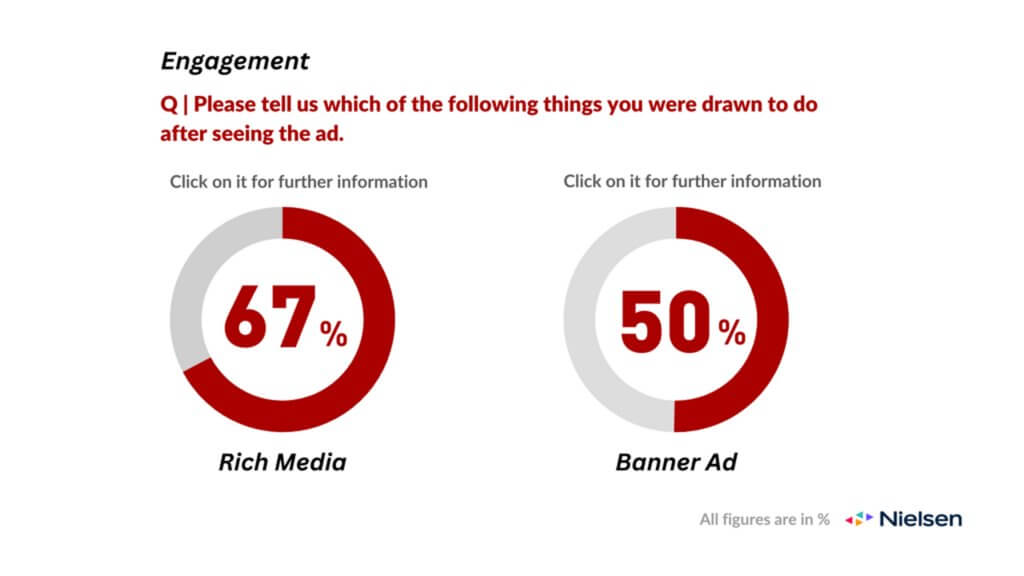
In addition to rich media, there are other interactive formats:
- Video Interaction. Interactive video advertising.
- In-Game. Integration of advertising banners into the gameplay.
- Split Screen. Advertising in which the screen is divided into two parts with different content.
Targeting
Targeting uses available data about users to find the target audience. Competent setting of parameters allows you to achieve a high conversion rate from the campaign.
The main goal is to ensure that the banner reaches only those who are interested in the proposed product or service. For this purpose, targeting segments the audience by a number of characteristics: gender, age, interests, geography, online behaviour.
This helps to minimise advertising blindness and optimise promotion costs.
How to Break Through Ad Blindness — Recommendations from BYYD
- Personalise ads. Ads that are based on users’ interests and behaviour attract more attention.
- Use a call to action. Describe the benefits of the product and tell the user how to get them. Make the wording informative. Instead of ‘Click’ write, ‘Book now to get 20% off’.
- Employ interactive adverts. Implement animated banners with interaction options. Such ads increase user engagement.
- Conduct tests before launching adverts. This helps to refine creatives in case of insufficient performance indicators and avoid budget loss.
- Track the effectiveness of the banner. Collect statistics on conversion and mark banners where it drops to improve the situation in time.
- Use mobile advertising. In-app promotion helps to fight banner blindness thanks to targeting and interactivity.
According to the Digital 2025 report, in-app advertising is considered one of the largest segments of digital advertising. It has established itself as an effective tool for engaging with new audiences and attracting new customers.
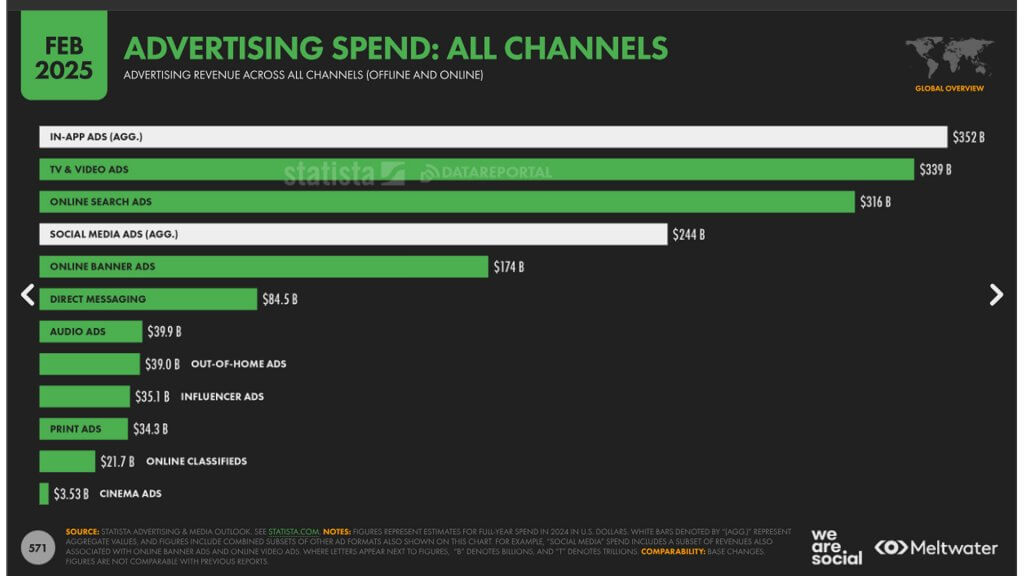
We have been helping brands solve their image challenges with mobile app advertising for over 10 years. During this time, we have implemented thousands of successful advertising campaigns.
If you would like to learn more about the BYYD platform cases, we invite you to read the examples of mobile promotion on our website.
Found this helpful? Share it with your friends and colleagues!
For consultations and partnership inquiries:
- Submit a request on our website
- Email us at hello@byyd.me